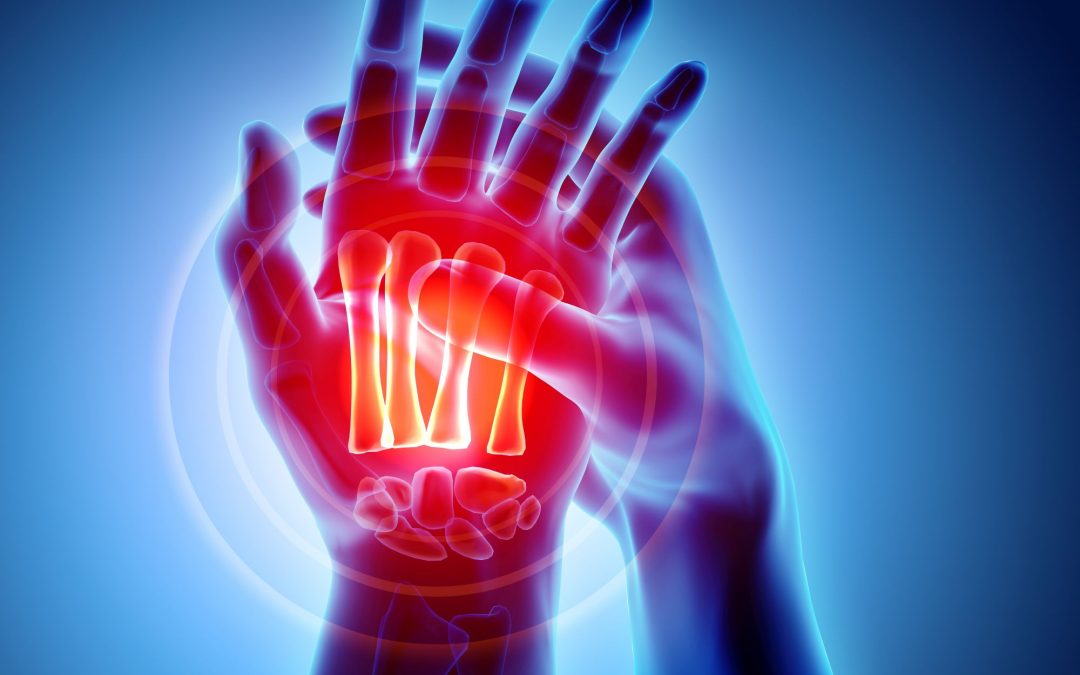What is Arthritis?
“Arthritis” does not refer to one single disease, but multiple joint pain or joint diseases. Arthritis is one of the leading diseases that causes physical deformities and disabilities. There are more than 100 different types of arthritis that affect tens of millions of people from all ages, genders, and backgrounds.
Types of Arthritis
The two most common types of Arthritis are “Osteoarthritis (OA)” and Rheumatoid Arthritis (RA).” In our body, we have a tissue called cartilage, which helps to connect the bones. When Osteoarthritis occurs, the protective cartilage joint breaks down, making it difficult to move the joints around. If the bones rub against each other, then it may cause severe pain. The intensity of pain varies depending on different body types. Rheumatoid Arthritis happens when the joint and other organs in the body are being attacked by our own immune system. A normal immune system would protect a person from viruses, bacteria, and any foreign things that come inside our body. In a Rheumatoid Arthritis immune system, it is out of control and attacks the healthy system instead of protecting it. Over time, the disease will cause permanent pain damage to the joint.
Symptoms
- Joint swelling
- Joint stiffness
- Tenderness or pain when touching a joint
- Problems moving the joint
- Warmth and redness on a joint
- Decreased range of motion
- Tired/loss of appetite/fever
Risk Factors/Cause of All Types of Arthritis (increases chance of developing disease)
- Family history
- Age
- Your sex
- Previous joint injury
- Obesity
Treatment Options
Medications
- Analgesics (Vicodin) or Acetaminophen (Tylenol) can help reduce the pain but cannot lower the swelling and redness.
- Nonsteroidal anti-inflammatory drugs (NSAIDS), such as Ibuprofen (Advil) and food that contains Salicylates (almonds, apples, cherries, coffee, cucumbers, grapes) can help control both the pain and reduce swelling. Reduce the amount of Salicylates when using another medication.
- Menthol/Capsaicin are creams that will stop sending pain signals inside the body.
- Immunosuppressants (prednisone or cortisone) reduces the swelling and redness of pain.
- Antirheumatic drugs (DMARDs) are medications that doctors prescribe to cover up the immune system.
Surgery and Physical Therapy
Doctors can replace the joints, hips, and knees with an artificial one. But if the arthritis pain is the most severe in fingers or wrists, then the doctor will carry out a surgery to combine both parts of the bone together by connecting the ends of the bone and letting it heal overtime to become one bone. Signing up for physical therapy can help strengthen core muscles around the joint area and improving daily physical life.
New Medical Breakthrough
On February 4, 2019, Cornelia Weyand from Stanford University School of Medicine found out why the immune cells are triggering bad behaviors in a healthy immune system. Weyand said there is a possible way to change their bad behavior using a reversible particle called A769662. Weyand is expecting to test the effectiveness of the particle among the Rheumatoid Arthritis patients in a clinical trial soon.
CSOFT’s Recommendation
- Maintaining a healthy weight every day to prevent developing the disease again by keeping a regular exercise through walking, swimming, and getting a good rest when needed.
- Healthy diet: diet with antioxidants (fruits, vegetables, fish, and nuts) and AVOID eating any unhealthy food (fast food, fried, dairy, and red meat)
- Avoid joint injuries during sports or any activities that requires heavily use of joints.
Reference
Aging: Arthritis. (2015, March 16). Retrieved from https://www.nih.gov/about-nih/what-we-do/nih-turning-discovery-into-health/aging-arthritis.
Arthritis. (2019, July 19). Retrieved October 30, 2019, from https://www.mayoclinic.org/diseases-conditions/arthritis/symptoms-causes/syc-20350772.
News Center. (2019, February 4). Scientists identify reversible molecular defect underlying rheumatoid arthritis. Retrieved October 30, 2019, from https://med.stanford.edu/news/all-news/2019/02/scientists-identify-defect-underlying-rheumatoid-arthritis.html.
What Is Arthritis? (n.d.). Retrieved October 30, 2019, from https://www.arthritis.org/about-arthritis/understanding-arthritis/what-is-arthritis.php.
